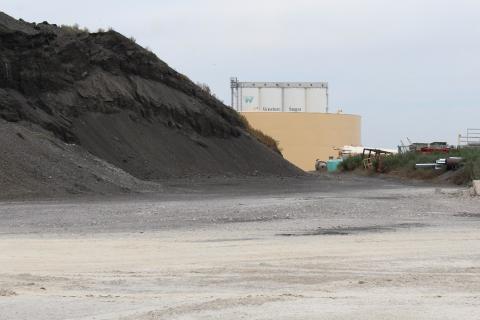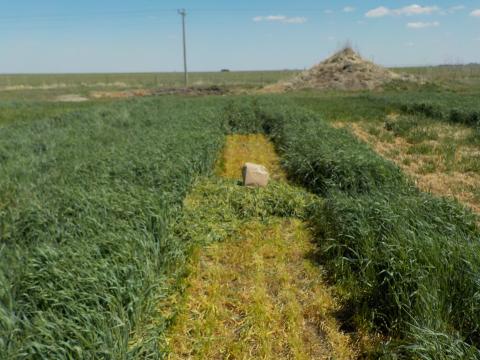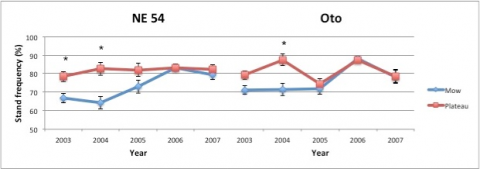Interns Share Research Results from Field Studies and Extension Experience
February 14, 2018
Seven Experiential Learning Fellows in a USDA-funded program at the University of Nebraska-Lincoln spent their summer 2017 working with scientists, reviewing and conducting research, and developing Extension education to convey research findings to growers for field application. This article describes the program and links to their articles on timely topics from cover crops to soil management.
Using High-Carbon Char as a Soil Amendment to Improve Soil Properties
February 13, 2018
Can a residue from sugarbeet processing in western Nebraska be used to increase soil carbon? Researchers share the first year of data examining the effects on soil carbon and soil physical properties from using high-C char.
Long-term Tillage and Soil CO2 Fluxes
February 13, 2018
How do different tillage systems affect CO2 and what factors contribute to fluxes? These were the questions addressed by students and agronomists studying long-term tillage and no-till plots in eastern Nebraska.
Rain-Fed Corn Growth and Development Following Cover Crops in 2017
February 13, 2018
Researchers in south central Nebraska examined potential effects of planting rye and a rye-mix cover crop following wheat and prior to corn in rain-fed conditions. Based on their findings, they offer two take-home messages for cover crop growers.
Can a Rye Cover Crop Reduce Wind Erosion from Fields with Little Residue Cover?
February 12, 2018
Researchers examined the effect of a rye cover crop on reducing soil erosion from wind in fields where a large amount of the crop residue had been removed.
Switchgrass Barriers as a Soil Water Conservation Practice
February 7, 2018
Research was conducted to compare infiltration rates in switchgrass barriers and a soybean field. Results showed the value of grass barriers in improving soil structure and infiltration and reducing runoff of sediments and nutrients.
Does Weed Control Method Impact Indiangrass Establishment and Persistence?
February 5, 2018
This study evaluated two weed control methods and seeding rates on establishment and persistence of two indiangrass cultivars, ‘Oto’ and ‘NE 54’, from 2003 to 2007.
Does Seeding Rate Affect Establishment-Year Growth and Long-term Forage Yield of Indiangrass?
February 5, 2018
Recent improvements in forage yield and nutritive value of indiangrass, along with its wide range of adaptation should increase its use in bioenergy and forage production, conservation practices, and reclamation projects in the central Great Plains. This study tested five seeding rates with two varieties — 'Oto' and 'NE 54' — and the effects on dry matter production






